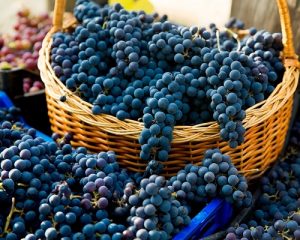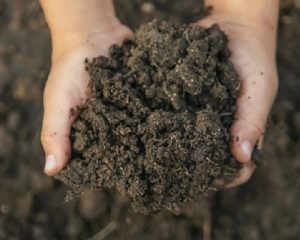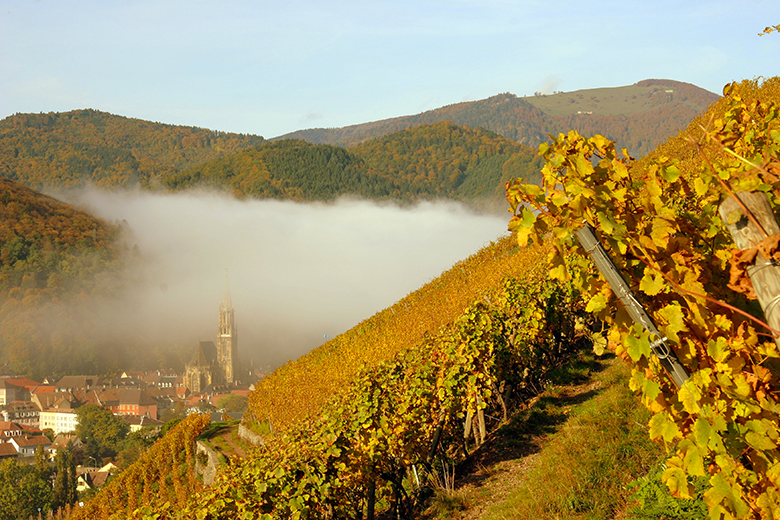 Crafting gorgeous cuvées using the Alsace region’s typical grape varieties, Olivier Humbrecht is somewhat of a virtuoso. This vintner and Master of Wine has talent to spare, and we were lucky enough to have a chat with him.
Crafting gorgeous cuvées using the Alsace region’s typical grape varieties, Olivier Humbrecht is somewhat of a virtuoso. This vintner and Master of Wine has talent to spare, and we were lucky enough to have a chat with him.
The Humbrecht family has spent centuries in the vineyard. Domaine Zind-Humbrecht as it is today, was founded a little more recently, though, in 1959, the result of a fusion of land between the grape-growing clans of Humbrecht and Zind. The former had their land in Gueberschwihr, and the latter tended vines in Wintzenheim, a veritable palette of terroirs brought together by the marriage of Léonard Humbrecht to Geneviève Zind. Olivier and Margaret Humbrecht were next to take up the domain, which they’ve been co-running since the start of the 2000s. This was only once they’d got a real feel for the land though, since they’d both been working the estate since 1989. With their skills not limited by any means to the meticulous work required by a vineyard, Olivier Humbrecht actually became the first French Master of Wine! We’re talking about a vigneron brimming with talent and know-how.
Five hectares were the sum of Zind-Humbrecht’s modest domain in the 1960s, but as its potential grew, so did its surface area, and by the nineties it had 40 hectares in its care. This included some illustrious grand cru plots. Since 1992, the cellars and winery have been at home in Turckheim, at the heart of Herrenweg. There’s quite a high density of plants, at between 6,000 and 10,000 vines per hectare. The weaker the soil, the more vines cultivated.
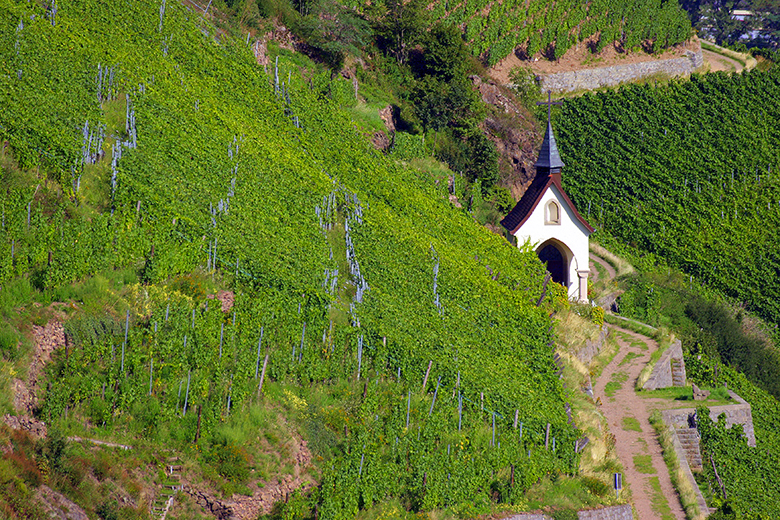
No physical expense is spared when it comes to these vines, with a worker employed for every two hectares, then supported by seasonal harvesters. Adding to the demanding nature of this work is the fact that the domain has been organic since 1998 and biodynamic since 2002. ‘We practise a precise kind of biodynamics, so we follow the progress of the vineyard very closely. We intervene there much more than we do in the winery,’ explains Olivier Humbrecht. Tending to a diverse range of terroirs, the soils require different kinds of treatment adapted to their profile. More specifically, a windlass is used for five hectares on the steepest ground, a horse helps out for twelve hectares, and the rest is worked with a lightweight tractor.
The vines are almost never cropped (apart from during particularly rainy years), and are more often wrapped instead. Overall, the work carried out is classic in style and meticulous in practise, with grass growing between the vine rows. As well as the natural products used to help the plants, copper and sulphur are used in very reasonable doses. ‘We’re lucky in Alsace to have dry weather during the mildew season, which means we can apply copper and sulphur sparingly. To heighten resistance to disease, we use various preparations, tisanes, essential oils, and decoctions. The risk of mildew is also reduced by the limited fertility of these vines.’
In the winery, the methods used are relatively simple and less involved. Since 1986, Zind-Humbrecht has carried out whole-harvest vinifications, and only gravity steps in to take the grape juice from one step to the next. Pressing is long and slow whilst settling is a short process. No stirring or punching down happens whilst the grapes vinify, and the only additive that features is a small dose of sulphur. The grape must in then transferred to foudres where the wines ferment for a long while. Lees are left in contact with the wine for the entirety of its maturation. Bottling takes place 18 months after the harvest, and this final process involves a slight filtration.
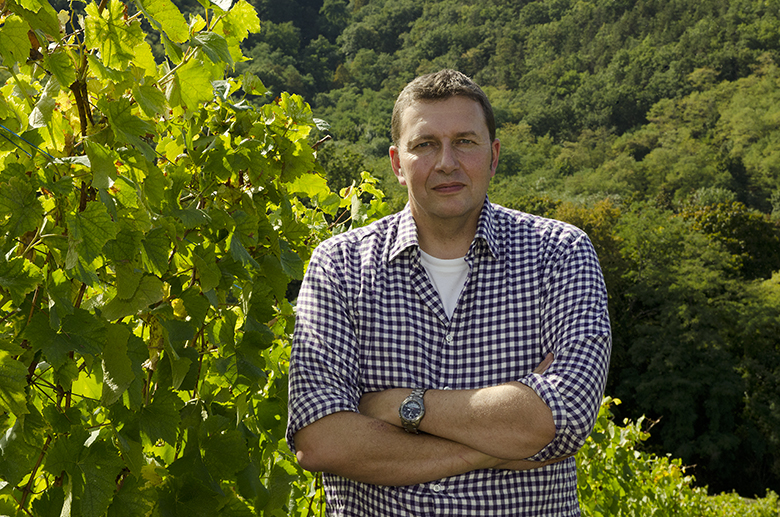
Adapting to the climate crisis
Olivier went on to tell us about his main concern of late, ‘adapting to a climate that’s changing all the time, from year to year and in the long term. Since the harvests are occurring earlier, we have to make sure that the grapes still reach a good level of physiological ripeness in less time. Sugar production is linked to heat, light, and water. This sugar level isn’t difficult to reach, but a lack of ripeness might well be if there isn’t enough time between budding and harvesting, an issue that can lead to a lack of aroma and green tannin.
Biodynamics help to shorten certain physiological stages like véraison [when the grapes start to ripen], so there is more time overall for optimal ripening. When treating the fruit, we have to use products that don’t stress the grapes or get inside them, so as to avoid any disturbance of the process. Tisanes help to strengthen the plant, as well as ripening their tannins and acidity. To stimulate the flowering of the vines, we also cultivate plants with a reputation for flowering, in the hope that they send a message to the vines around them.’ He adds that, in Alsace, shifts in the vine cycle range from 18 days to a month, and that rain levels have been particularly affected of late. Sometimes, there’s no rain for several months at a time! ‘The continental side of Alsace’s climate is becoming predominant; Colmar is now France’s driest city,’ he emphasises. We’re only going to be hearing more about the impact of climate change as time goes on, and no region is being spared. If anyone can keep on top of things while keeping the superb quality of their produce, though, it’s Olivier Humbrecht.


